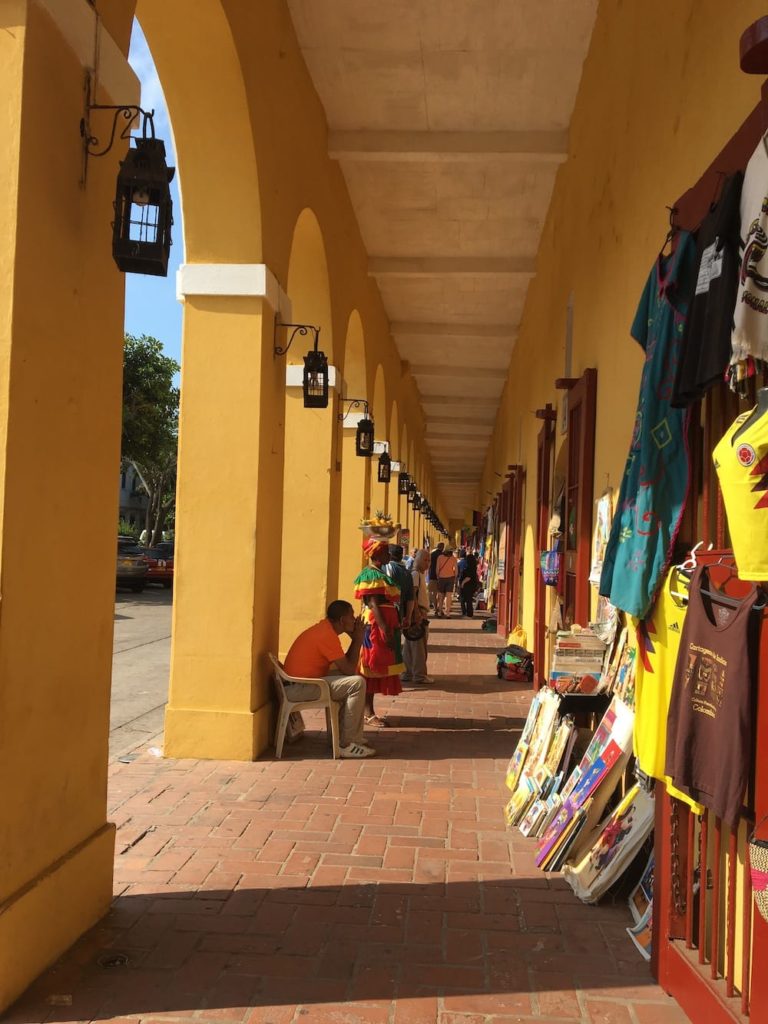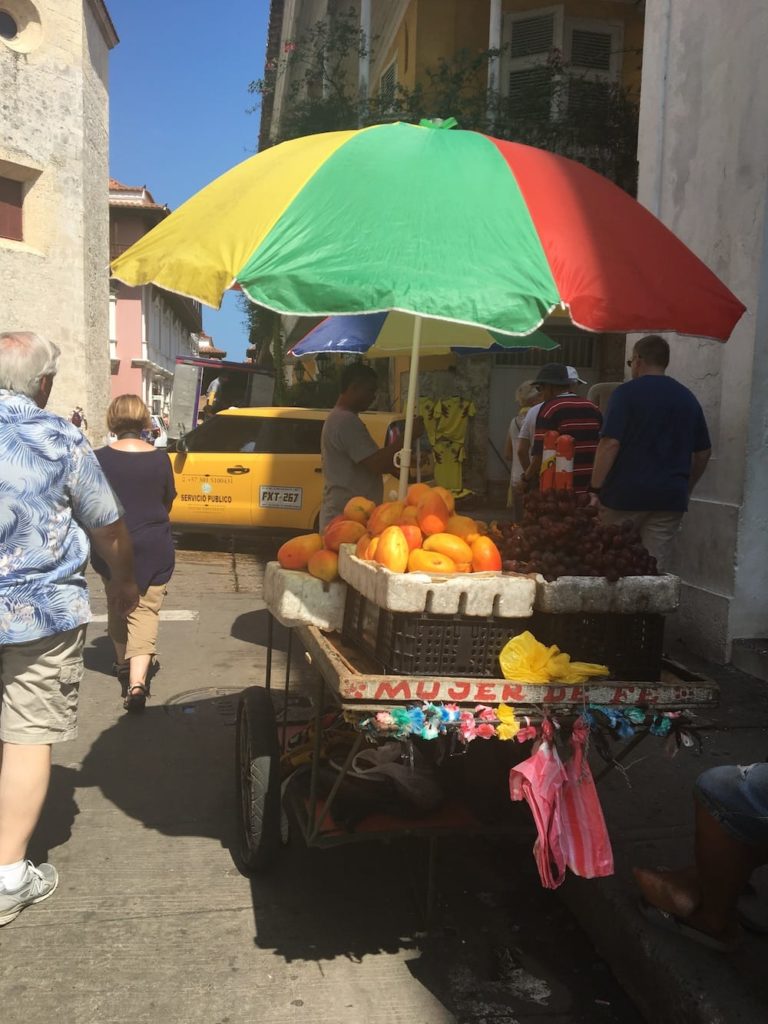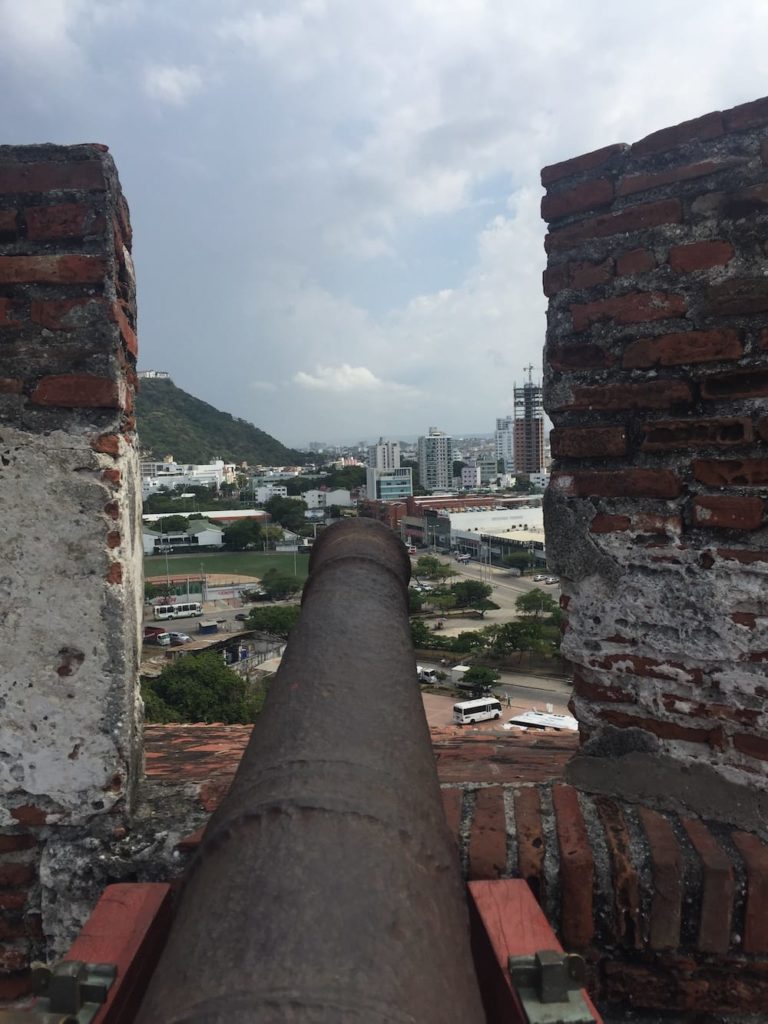We were sailing between the Islands of Cuba and The Dominican Republic towards Cartagena des Indies, Colombia. There were two semi-retired travel experts on board who gave lectures about the places we were stopping, and I learned about the geology of the Caribbean, why the sea is so blue, and a little of the history and people of Cartagena.
My impressions of Cartagena are of colour and heavy, humid heat. The colour was in the painted colonial buildings, the swirling skirts and headdresses of the traditional dancers, the oranges and mangoes on the fruit carts and the deep-sea green of the emeralds in the jewellery shops. All man-made things seemed to echo nature: the bright hues of parakeets, peacocks and butterflies, tropical trees and flowers. We visited Spain in 2018 (Nestless and Restless Season 2), and we were able to connect the architecture, with Moorish architectural styles common in Spain such as the wooden window shades in the colonial-era building housing the Inquisition Museum, while noting the indigenous and Caribbean African influences in dress and customs.


The small and not-too arduous museums were in beautiful buildings in the walled old city. Ironic that such architectural beauty houses such terrible records of war, plunder, and torture. In the tall, wooden-beamed halls of the Naval Museum, we learned about the sea battles between the Spanish, British and French over this lucrative stretch of coast. The Inquisition Museum chronicled the horrible persecution of that time in cool rooms off a calm central courtyard with a gentle fountain. The Jesuit monastery and church of San Pedro Claver likewise had an interior garden, with the surrounding cloisters used as an art gallery exhibiting 16th century religious icons of martyrdom and modern artwork about the societal destruction resulting from the Colombian drug trade.


We were tired and hot as the guide led our group to an emerald shop, where we watched one of the assistants make Colombian coffee for us in a copper tank, filtering it through two-three times. Our well-informed guide was watching the only member of the group who had any interest in buying emeralds as the jeweller tried to make a sale. Presumably the guide gets a commission if there is a sale, and as the humming and hawing got longer and longer and we finished our coffee, the rest of the group was rooting for a sale too, so we could get on with the tour. On the cusp of buying the tourist said no. His wife turned away, embarrassed, and we braced to go out into the heat and climb the fort Castillo de San Felipe de Barajas, our last stop of the day.
The fortification took about 100 years to build, but only five minutes to climb. It was so well built it saved the city from an attack by the British Admiral Edward Vernon in The Battle of Cartagena in 1741. We had a good view from the top of the city’s areas: the beaches, walled city, modern skyscrapers and port, where our ship was waiting to set off that evening for The Main Event.